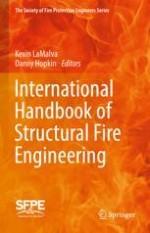2021 | OriginalPaper | Buchkapitel
6. Concrete Structures
verfasst von : Thomas Gernay, Venkatesh Kodur, Mohannad Z. Naser, Reza Imani, Luke Bisby
Erschienen in: International Handbook of Structural Fire Engineering
Aktivieren Sie unsere intelligente Suche, um passende Fachinhalte oder Patente zu finden.
Wählen Sie Textabschnitte aus um mit Künstlicher Intelligenz passenden Patente zu finden. powered by
Markieren Sie Textabschnitte, um KI-gestützt weitere passende Inhalte zu finden. powered by
